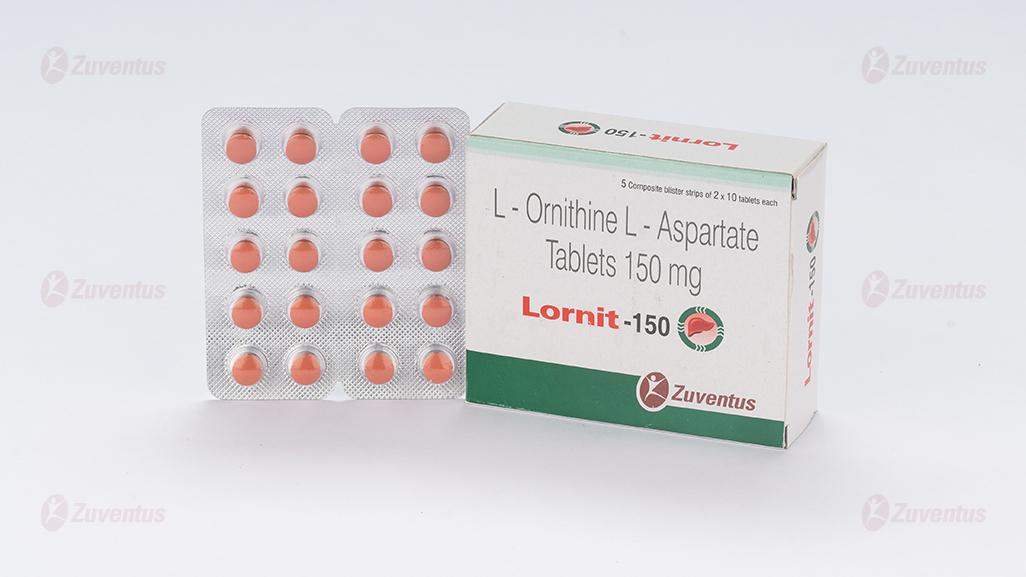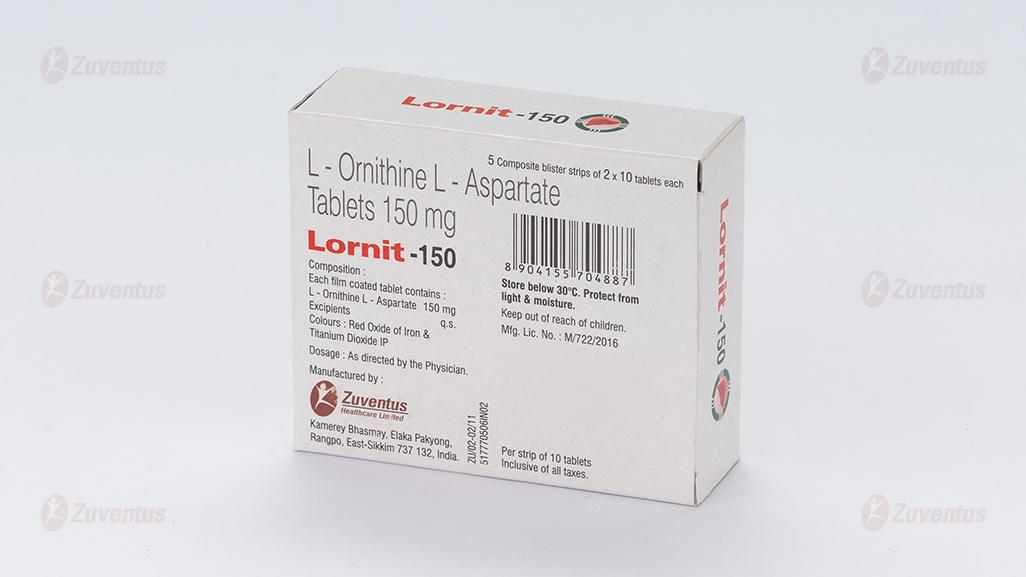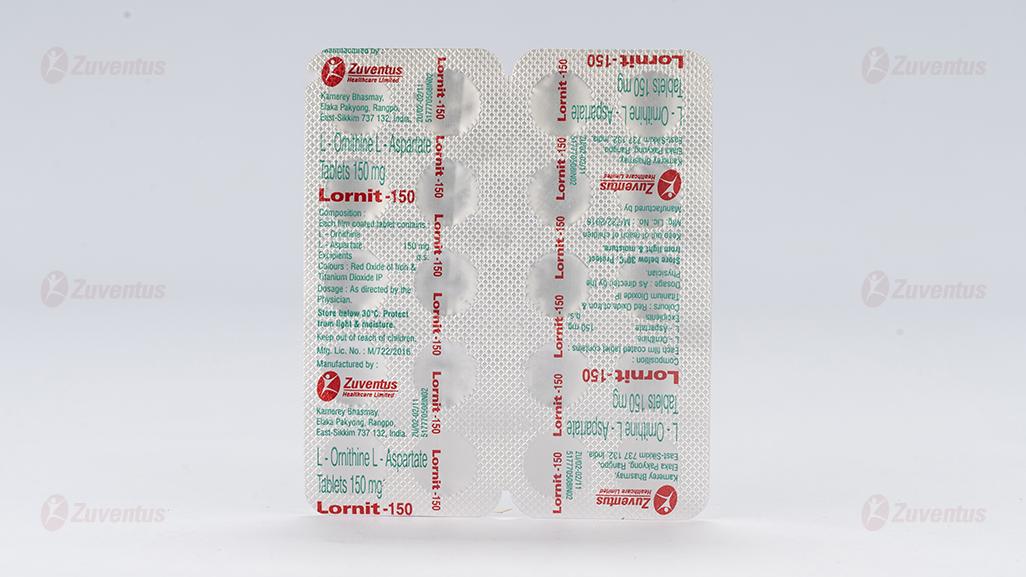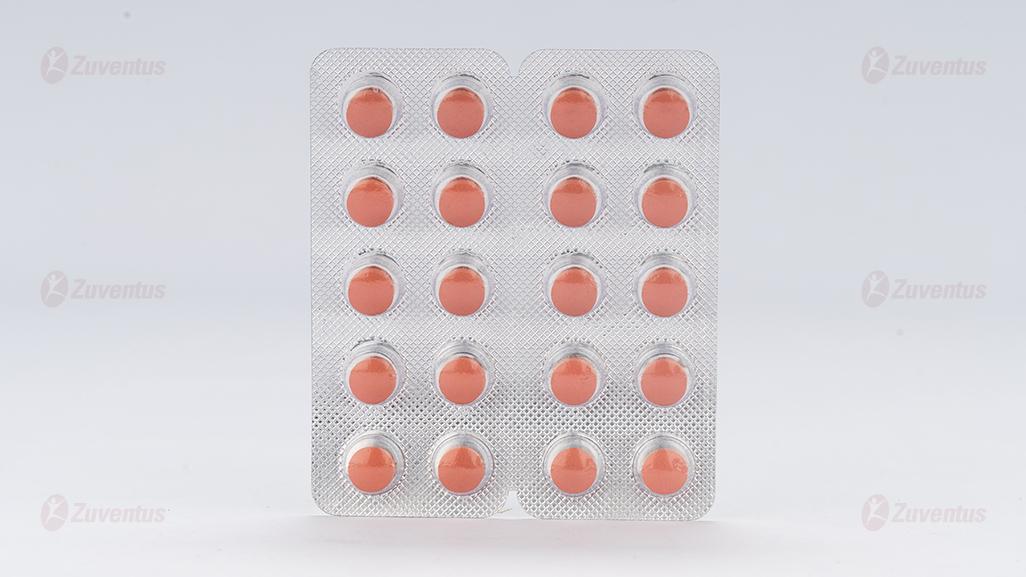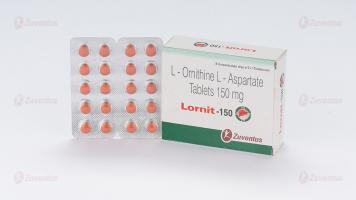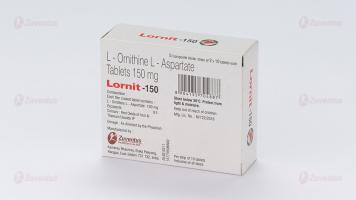Lornit 150 mg Tablet
Therapy Area
Gastrointestinal
1.0 Generic name
L-Ornithine L-Aspartate tablet
2.0 Qualitative and quantitative composition
Each film coated tablet contains:
L-Ornithine L-Aspartate 150mg/ 500 mg
Excipients q.s
3.0 Dosage form and strength
Tablet 150 mg/ 500 mg
4.0 Clinical particulars
4.1 Therapeutic indication
Treatment of associated conditions and sequelae of diseases with impaired hepatic detoxification (e.g. cirrhosis of the liver), when there are symptoms and signs of minimal or overt hepatic encephalopathy.
4.2 Posology and method of administration
2-3 tablets 3-4 times per day can be administered in mild to moderate liver disorders.
4.3 Contraindications
- Hypersensitivity to LOLA or any other excipients of this product.
- Severe renal insufficiency (serum creatinine value > 3 mg/100 ml).
4.4 Special warnings and precautions for use
- Monitoring of serum and urinary urea levels at regular intervals should be done.
- Should be used during pregnancy only if the potential benefits out-weigh the potential risk to the fetus.
4.5 Drugs interactions
No known drug-drug interaction.
4.6 Use in special populations
Pregnancy & Lactation
The administration in pregnancy and lactation should be avoided. If treatment is nevertheless
thought to be necessary, the benefits and risks should be carefully assessed.
4.7 Effects on ability to drive and use machines
No studies on the effect on the ability to drive and use machines have been performed
4.8 Undesirable effects
Very rarely side effects like nausea and vomiting occur. These side effects are usually transient and do not necessitate the withdrawal of the drug.
Reporting of suspected adverse reactions
Reporting suspected adverse reactions after authorisation of the medicinal product is important. It allows continued monitoring of the benefit/risk balance of the medicinal product. Healthcare professionals are asked to report any suspected adverse reactions via email to: medico@zuventus.com
Website: https://www.zuventus.com/drug-safety-reporting
By reporting side effects, you can help provide more information on the safety of this medicine.
4.9 Overdose
There is no data available for LOLA tablet overdosage. If any patient consumes excess of drug, it should be managed symptomatically.
5.0 Pharmacological properties
5.1 Mechanism of Action
L-Ornithine-L-Aspartate is a stable salt of the amino acids ornithine and aspartic acid and provides substrates for urea genesis and glutamine synthesis, which are important mechanisms in ammonia detoxification.
5.2 Pharmacodynamic properties
It is well known that both ornithine and aspartic acid play a key role in liver metabolism. Ornithine is the starting point of ammonia detoxification. It brings ammonia into the urea cycle, in which ammonia is converted into a non-toxic substance urea. It activates ornithine transcarbamoylase and carbamoyl phosphate synthetase and acts as a substrate for urea genesis. Hence, LOLA can activate the periportal urea cycle in the liver. The other component of the drug, aspartic acid, not only represents an important stage in the reaction sequence involved in the urea cycle, but also features in the tricarboxylic acid cycle as oxaloacetate formed by transamination, thereby improving the energy balance of diseased liver. Furthermore, aspartic acid promotes natural regeneration of liver cells by taking part in pyrimidine biosynthesis.
After conversion to α-ketoglutarate, aspartate and ornithine, act as carbon sources for perivenous glutamine synthesis. LOLA up-regulates glutamine synthesis in the skeletal muscle by substrate provision for glutamine synthetase. Ammonia is consumed during urea formation and glutamine synthesis, and thereby LOLA decreases blood ammonia levels.
5.3 Pharmacokinetic properties
- L-Ornithine-L-Aspartate is rapidly absorbed and cleaved into L-Ornithine and L-Aspartate.
- Elimination half-life of each amino acid is short, approximately 40 min and bioavailability is 82.2 28% after oral administration.
- Some L-Aspartate appears unchanged in the urine.
6.0 Nonclinical properties
6.1 Animal Toxicology or Pharmacology
No known animal toxicology data
8.0 Pharmaceutical particulars
8.1 Incompatibilities
Not applicable
8.2 Shelf-life
Refer on pack
9.0 Patient counselling information
- You will be regularly monitored for blood creatinine and blood/urine urea levels.
- Inform your doctor if you are pregnant, planning a pregnancy, or breastfeeding.
- Do not take this medicine if you are allergic to any of its ingredients.
12.0 Date of revision
23.09.2024
About Leaflet
Please read this leaflet carefully before you start using this medicine because it contains important information for you.
- Keep this leaflet. You may need to read it again.
- If you have any further questions, ask your doctor or pharmacist.
- This medicine has been prescribed for you. Do not pass it on to others. It may harm them, even if their signs of illness are the same as yours.
- If you get any side effects, talk to your doctor or pharmacist. This includes any possible side effects not listed in this leaflet.
What is in this leaflet
1. What Lornit is and what it is used for
2. What you need to know before you use Lornit
3. How to use Lornit
4. Possible side effects
5. How to store Lornit
6. Contents of the pack and other information
1. What Lornit is and what it is used for
Lornit contains the active substance L-Ornithine L-Aspartate. It is used to treat conditions associated with impaired liver detoxification, such as cirrhosis of the liver, when there are symptoms and signs of minimal or overt hepatic encephalopathy.
2. What you need to know before you take Lornit
Do not take Lornit if:
- You are allergic to L-Ornithine L-Aspartate or any of the other ingredients of this medicine.
- You have severe renal insufficiency (serum creatinine value > 3 mg/100 ml).
Warnings and precautions:
- Regular monitoring of serum and urinary urea levels is necessary.
- Use during pregnancy should only be if the potential benefits outweigh the potential risks to the fetus.
Pregnancy and breastfeeding:
Driving and using machines:
- Avoid using Lornit during pregnancy and breastfeeding unless deemed necessary by your doctor. Driving and using machines:
No studies have been performed on the effects of Lornit on the ability to drive and use machines.
3. How to take Lornit
Always take this medicine exactly as your doctor has told you. Check with your doctor if you are not sure.
Recommended dose:
- 2-3 tablets, 3-4 times per day for mild to moderate liver disorders.
If you use more Lornit than you should
Tell your doctor if you accidentally use more than you were told.
If you forget to use Lornit
If you forget to take at the right time, use it as soon as you remember, then carry on as before. Do not take a double dose to make up for a forgotten dose.
If you stop using Lornit
Do not stop your treatment even if you feel better unless told to do so by your doctor.
If you have any further questions on the use of this product, ask your doctor or pharmacist.
4. Possible side effects
Like all medicines, this medicine can cause side effects, although not everybody gets them.
Very rare side effects:
- Nausea and vomiting, which are usually transient and do not require stopping the medication.
Reporting of side effects
If you get any side effects, talk to your doctor, pharmacist or nurse. This includes any possible side effects not listed in this leaflet. You can also report side effects directly: Website: www.zuventus.com in and click the tab “Safety Reporting” located on the top end of the home page. Website link: https://www.zuventus.com/drug-safety-reporting By reporting side effects, you can help provide more information on the safety of this medicine. You can also report the side effect with the help of your treating physician.
5. How to store Lornit
- Keep this medicine out of the sight and reach of children.
- Do not store above 25°C. Do not freeze.
- Do not use this medicine after the expiry date which is stated on the label and carton after EXP.
- The expiry date refers to the last day of that month.
Do not throw away any medicines via wastewater or household waste. Ask your pharmacist how to throw away medicines you no longer use. These measures will help protect the environment.
6. Contents of the pack and other information
What Lornit contains:
- The active substance is L-Ornithine L-Aspartate (150 mg or 500 mg per tablet).

